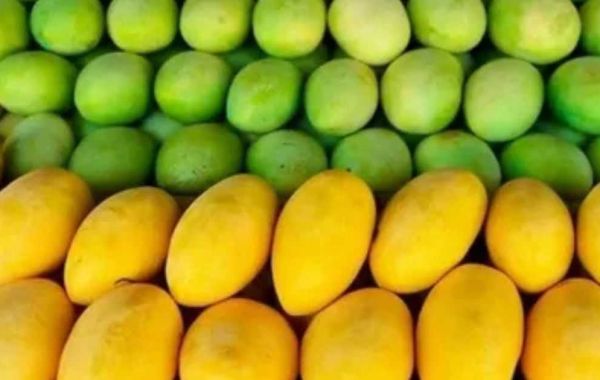Introduction
Mango Companies in Pakistan rely heavily on selecting the right regional varieties to ensure the success of their dry mango products. These companies know that not all mangoes are created equal. The type of mango used directly affects the flavor, color, texture, and shelf life of the dried fruit. Pakistan’s diverse climate and rich agricultural land make it a hub for various mango varieties, each with its unique profile. From Multan’s sweet Chaunsa to Sindh’s firm Langra, regional types have different drying behaviors and consumer appeal. The key to thriving in this competitive market lies in understanding how these regional differences influence final product quality. With the growing demand for nutritious snacks, mango companies in Pakistan are increasingly exploring which varieties deliver the best dried mango experience to consumers.
Multan: Home to the Famous Chaunsa Mango
Multan is one of the most fertile regions in Pakistan and a top contributor to mango farming. This region is globally recognized for the Chaunsa mango. Known for its juicy pulp and sweet aroma, the Chaunsa is a favorite among consumers. However, its high moisture content makes it slightly challenging to dry. Dry mango processors have to use low-heat techniques to preserve flavor and texture. Despite the challenges, when dried correctly, Chaunsa slices offer a naturally sweet taste and a soft, chewy feel. These characteristics make it highly desirable in premium dry mango product lines. Companies often use this variety for gourmet and export-quality dried mangoes.
Sindh: Producer of Langra and Dasheri Varieties
Sindh, particularly areas around Hyderabad and Mirpurkhas, provides excellent varieties like Langra and Dasheri. These mangoes have firmer flesh and less moisture compared to Chaunsa. This makes them easier to slice, dry, and preserve without excessive processing. The resulting dried mango is more leathery, with a tangy and robust flavor profile. These traits cater to a different consumer segment—those who prefer intense taste and a longer chew. Langra and Dasheri varieties from Sindh are ideal for mass production. Their uniform texture and drying efficiency allow Mango Companies in Pakistan to meet bulk demands cost-effectively.
Punjab: Diverse Varieties with Balanced Traits
Punjab’s contribution to the mango industry includes varieties like Anwar Ratol, Fajri, and Malda. Each of these has a unique balance of taste, aroma, and pulp density. Anwar Ratol is popular for its sugary flavor and fine texture, making it suitable for flavored dry mango slices or mixes. Malda and Fajri are larger and have more fiber, often used in chutneys or powdered mango products. Dry mango businesses in Punjab benefit from this diversity. It allows flexibility in product design, ranging from soft fruit strips to mango powder for cooking. These balanced traits help businesses offer multiple product categories under one brand.
Balochistan: A Growing Contributor with Unique Potential
Balochistan is an emerging region in mango cultivation. While its mango industry is still developing, early results show great promise. The province’s dry climate allows the fruit to mature slowly, which enhances natural sweetness and density. These traits make the mangoes from Balochistan potentially ideal for sun-drying techniques. Smaller farms in the area are already partnering with national processors. Mango companies in Pakistan are exploring these opportunities to expand their product lines and sourcing networks. With better infrastructure, Balochistan could soon become a key supplier in the dry mango sector.
Flavor Matters: Why Consumers Prefer Region-Specific Varieties
Consumer preferences in Pakistan are deeply connected to regional flavor identities. Many buyers seek the dry mango flavor that matches their favorite fresh mango type. For example, customers in Punjab often prefer Chaunsa-based dried mango because it mirrors what they grew up eating. Others like the tangy twist of Langra or the unique taste of Anwar Ratol. These preferences directly affect sales and brand loyalty. Mango processors who understand regional flavor expectations can tailor their products more accurately. This results in better consumer retention and higher profitability for companies like Chanab Farms.
Texture and Color: Key Indicators of Mango Variety
Texture and color are major visual cues that affect consumer purchase decisions. Dried mango slices made from Chaunsa are golden-yellow and soft. In contrast, Langra yields a darker, firmer texture. Consumers associate color with freshness and texture with quality. Products that deliver consistent visuals tend to perform better in retail environments. This is why mango companies in Pakistan invest in variety-specific sorting and processing equipment. Matching the right drying technique to the mango type preserves natural attributes and enhances shelf appeal.
Supply Chain Considerations for Regional Sourcing
Different mango types require different harvesting times. This makes year-round dry mango production a logistical challenge. For example, Chaunsa is harvested later in the season, while Langra comes earlier. Companies need strong coordination with regional farms to plan efficient sourcing. Any delay in transport or storage can lead to spoilage and lower output quality. Dry mango manufacturers work closely with growers to ensure fresh deliveries during peak season. Cold storage facilities, ripening chambers, and timely transport are key elements in maintaining mango integrity before drying. Proper supply chain management reduces waste and increases output consistency.
Processing Techniques Based on Mango Variety
Each mango type reacts differently to dehydration techniques. High-moisture mangoes like Chaunsa require gentle drying to avoid a tough texture. Vacuum drying or freeze-drying methods are commonly used for such varieties. Firmer mangoes from Sindh or Punjab can tolerate higher temperatures and faster drying cycles. Companies also experiment with solar drying, especially in dry climates like Balochistan. By matching the technique to the mango variety, processors can retain flavor and nutritional value. Chanab Farms, for example, uses variety-specific methods to ensure every product batch meets high-quality standards.
The Export Edge: Using the Right Mango for Global Markets
International markets are becoming major consumers of Pakistani dried mango. Buyers in the Middle East, Europe, and the US look for specific traits—natural sweetness, bright color, and clean labels. Using the right mango variety ensures these expectations are met. Chaunsa and Anwar Ratol are especially popular in export markets due to their sweetness and aroma. To succeed globally, mango companies in Pakistan must align regional variety advantages with international taste preferences. Chanab Farms focuses on selecting premium varieties that match these expectations, ensuring successful entry and growth in foreign markets.
Conclusion
Mango Companies in Pakistan succeed by understanding how regional mango varieties influence dried product quality and customer preference. From the sweet Chaunsa of Multan to the firm Langra of Sindh, each mango type offers distinct advantages. These differences affect everything—from flavor and texture to processing methods and export appeal. Regional sourcing and specialized drying techniques help companies deliver premium products to local and global markets. As demand for dried mango increases, aligning variety selection with market needs will remain critical. Chanab Farms continues to lead by using the right mango for the right product.








